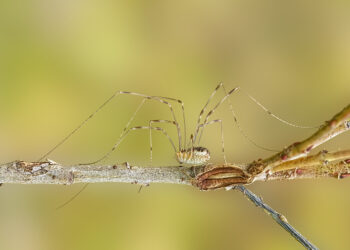What do your hands have in common with those of a chimpanzee or orangutan? More than you might imagine. With their familiar shape, opposable thumbs, and flat nails, the hands of great apes are strikingly similar to our own—a visible reminder of the deep evolutionary ties between humans and our closest primate relatives. Look at their hands, then at yours; they’re strikingly similar.

Primates evolved their grasping hands millions of years ago as a survival tool for life in the trees. Their common ancestors developed opposable thumbs, an evolutionary leap that allowed them to grip branches securely. Over time, claws disappeared, replaced by flat nails and sensitive fingertip pads. These adaptations enhanced their ability to hold on, manipulate objects, and interact with their environment.
For higher primates, including apes, hands became incredibly versatile. They could grasp fruit, swing from trees, and delicately examine tiny objects. This dexterity laid the groundwork for the intricate hand skills seen in humans today. If you can play the guitar or draw, thank evolution for making your hands capable of this.

Humans are also primates. Our evolutionary lineage is deeply intertwined with other primates, with humans diverging from a common ancestor with chimpanzees about six to seven million years ago (chimps are our closest relative). This shared heritage is evident in our biology, behavior, and even our hands.
Apes like orangutans show elongated fingers, specialized for climbing. In contrast, gorillas and early humans maintained shorter digits and longer thumbs, optimizing fine motor skills. Studies reveal that human-like thumb proportions have remained relatively unchanged since our shared ancestor with chimpanzees, demonstrating how well-suited they are for intricate tasks.

However, human hands have a unique difference: the opposable thumb. It’s not that we’re the only ones with an opposable thumb, but our opposable thumb is different. Humans have longer thumbs relative to their fingers than any other primate. This proportionality allows for powerful grips and precise control.
Whether it’s throwing a baseball, threading a needle, or signing your name, human hands perform an astonishing range of tasks. This versatility stems from the ability of the thumb to touch each finger with ease, offering both strength and precision.

Not all primates’ hands are built alike. Spider monkeys, for example, have adapted to life as nimble tree-swingers. Their hands are hook-like, with small thumbs that don’t get in the way during rapid movement. Instead, their prehensile tails act like a fifth limb, capable of gripping branches and supporting their entire body weight. Each tail even has unique skin patterns, like fingerprints, enhancing its gripping ability.
The differences in primate hands reflect their evolutionary paths. Apes like orangutans and chimpanzees show elongated fingers, specialized for climbing. In contrast, gorillas and early humans maintained shorter digits and longer thumbs, optimizing fine motor skills. Studies reveal that human-like thumb proportions have remained relatively unchanged since our shared ancestor with chimpanzees, demonstrating how well-suited they are for intricate tasks.

So when you look at the hand of a chimpanzee, a gorilla, or even your own—you’re seeing millions of years of evolution. These grasping, dexterous tools have helped primates thrive in their environments, adapt to challenges, and shape the world around them. Our hands connect us to a past that stretches back to the trees and beyond.
So, take another look at your hands. They carry a pretty deep legacy within them, a testament to the shared journey of our close relatives.







